Making your own effective homemade laundry detergent is easy and can save you money. We’ll show you how to make both a powder and liquid laundry detergent.
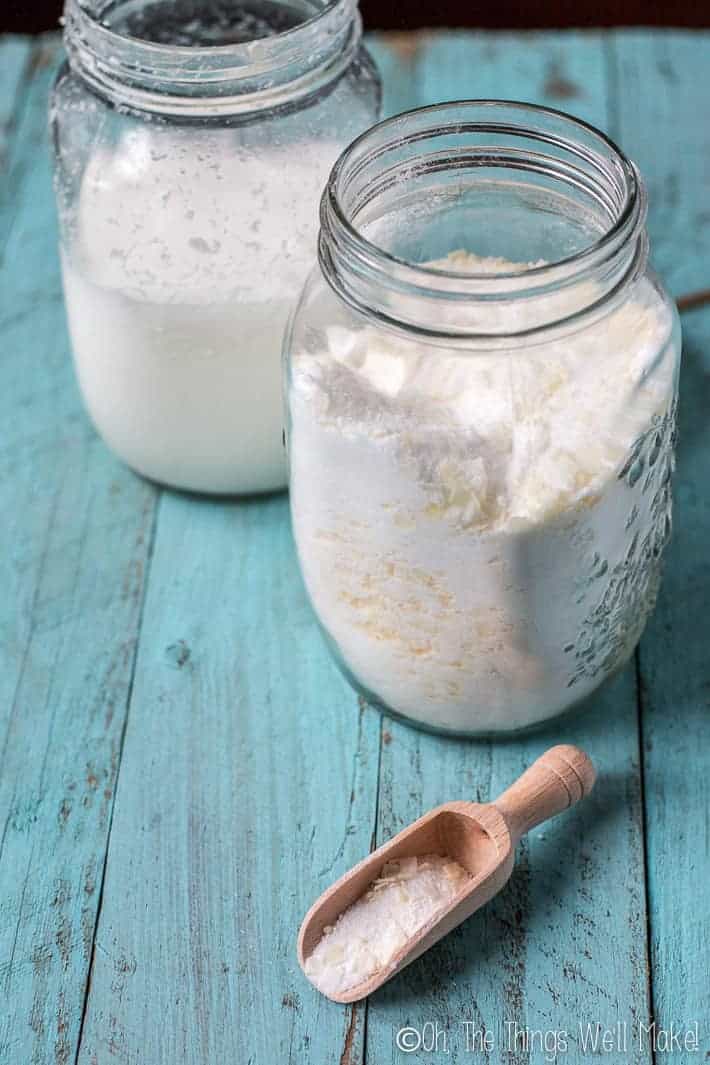
Before continuing, I’d like to update this post with a bit of an introductory warning.
While soap based “detergents” appear to work well for a lot of people, they can be problematic for many, especially those who have hard water. Minerals in the hard water react with the soap to form soap scum, which can build up on your clothes. Also, the various other additives in this soap can be harsh on the fabric when used over time.
Because I have a water softener at home, I successfully used the following recipe(s) for many months. (I started with the full recipe and then started ditching both the borax and the baking soda.) I never had any problems with it. Those with hard water, though, may find that their laundry appears dingy over time when using a soap based cleanser. That’s why I have formulated a surfactant based liquid laundry detergent for you to use instead. Working with surfactants may sound a bit intimidating at first, but it’s actually very, very easy!
If you’re still interested in reading about how to make a soap based laundry detergent, read on…
How to make a Soap-Based Laundry “Detergent.”
I’d like to welcome back Patricia Cornwell to my blog with another post about DIY cleaning options. If you’ll recall, Patricia is a small cleaning business owner, writer and self-proclaimed home improvement DIY expert. She works with a company called Tenancy Cleaning Ealing. In the past, she has shared information here about the best essential oils for disinfecting, and she also showed us how to make a DIY kitchen cleaning spray. Today, she’s going to share some more DIY cleaning recipes with us, specifically how to make a homemade laundry detergent.
I had been meaning to make my own laundry detergent for quite some time now, so I was really excited to see the topic of her next post. At first, it was tricky for me to find washing soda and borax here in Spain, but in the US it should be simple to find the ingredients. Some people are concerned about using borax in their detergents. If that worries you, feel free to leave it out. I tried washing a few bundles of laundry without it, and can’t really say if there was much of a difference either way. To be honest, I think the most important two ingredients are the soap and the washing soda which has the most power against dirt and grime.
I made both the powder and liquid versions, and have to say that they both have their pros and cons. The powdered detergent takes up a lot less space. The liquid detergent is basically just like the powdered version but dissolved in water. It’s a bit gloopy, which is normal, so you can’t really use it with a pump as I had intended. I do think it’s easier to dose the liquid homemade detergent because it has more volume so you don’t go overboard. With the powdered detergent, you really don’t need much. I use around 2 Tbsp. of the powder when I do a load of laundry.
If you really want to go super DIY on us, I’d suggest making your own basic beginner soap. It’s not as hard as you may think!
I’ve actually since written a recipe for a super easy laundry soap made with only coconut oil. Soaps with coconut oil have lots of cleaning power.
OK, enough of my babbling! Take it away, Patricia…
Are you sick and tired of spending tons of money on laundry detergent every couple of months? And of course, you have to get the more expensive one, because supposedly it is better.
But have you ever thought about an alternative?
How about you make your own homemade laundry detergent? By making your own, you can choose the ingredients and can make sure that there are no dangerous chemicals that can be a potential hazard for your family. Making your own homemade laundry detergent will not only give you peace of mind, but it will also cut your laundry expenses in half. It is much more cost-effective to make laundry detergent at home.
Making a homemade laundry detergent isn’t difficult at all. All you need to do is buy several ingredients and mix them together. Yes, it does take a bit more time and work, but it is well worth it.
You will need the following ingredients: washing soda, borax, castile soap, baking soda, and essential oil(s). The Essential oils are optional but they give your homemade laundry detergent a nice fragrance. In the US, these ingredients are easily found in stores, and they are safe and inexpensive. Figure out the ratios depending on how much you want to make at one time. You can adjust the size of the batch as you wish.
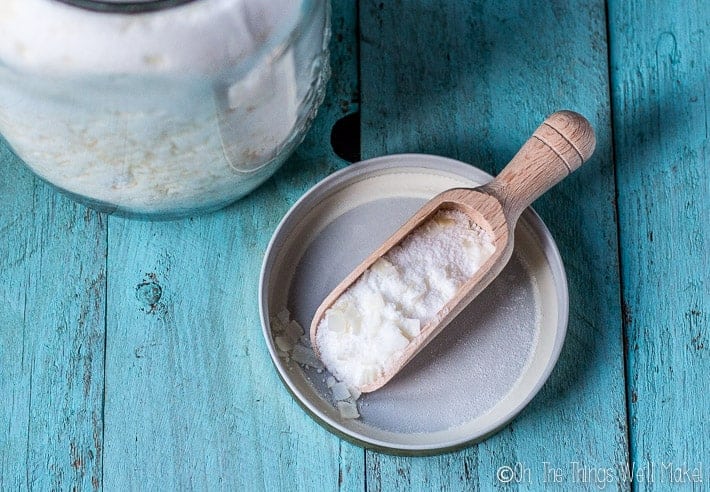
Powdered Homemade Laundry Detergent
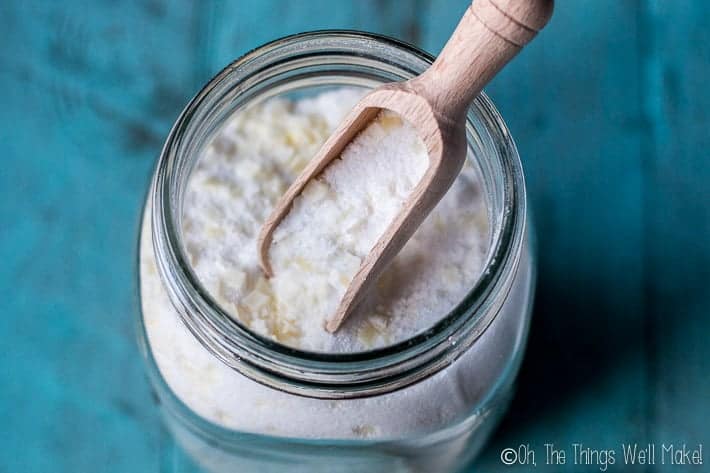
Powdered Homemade Laundry Detergent
Materials
- 4 cups Borax
- 4 cups Washing soda
- 2 cups Baking soda
- 4 cups grated castile soap You can make your own laundry soap
- Essential oils optional
Instructions
- Mix together all ingredients and store in a jar or box.
Notes
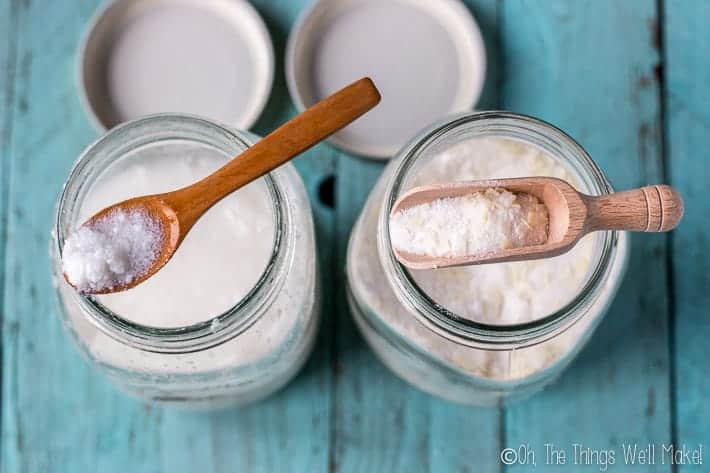
Liquid Homemade Laundry Detergent

Materials
- 1 cup Borax
- 1 cup Washing soda
- 1/2 cup Baking soda
- 1 cup grated bar soap
- Essential oils optional
Instructions
- Grate the soap into powder and put it in a pot with water. Heat and stir constantly until the soap is dissolved into the water.
- Add the soap solution, the washing soda, the baking soda, the borax, and any essential oils you want to use, to the bucket and stir.
- Add more hot water, as you continue to stir the ingredients, until they are all dissolved.
- Cover the bucket and let the detergent cool and gel overnight.
- Store the detergent in a container with a lid.
Notes
If you’re interested, you can find more information about making your own soap-based laundry detergents here.
Using homemade fabric softeners
You can also make yourself a fabric softener, and it is even easier and cheaper. All you need is some white vinegar and, optionally a few drops of essential oil(s). The white vinegar will do the work, while the essential oil(s) will leave your clothes smelling fresh and clean. Just add around 40 drops of an essential oil per gallon of white vinegar and add the vinegar to either the softener compartment of your washing machine or manually add it to your final rinse.
I’ve since published a post focusing on DIY natural fabric softeners with more ideas. If you are using a dryer to dry your clothes, I’d also like to suggest making your own wool dryer balls. Wool dryer balls are said to reduce drying time and to possibly soften clothes and reduce static cling. Adding a few drops of essential oils to your wool dryer balls helps scent your clothes as you dry them! (I have since been informed that there is a risk, albeit small, of EO’s igniting in the dryer when used in dryer balls. When used in such small amounts, it’s highly unlikely, but do so at your own risk! It may be better to scent your clothes with homemade lavender sachets in your closet instead!)
I hope you enjoyed this post and will try making this eco-friendly laundry detergent.
 Español
Español
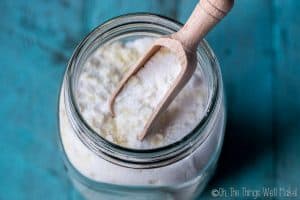
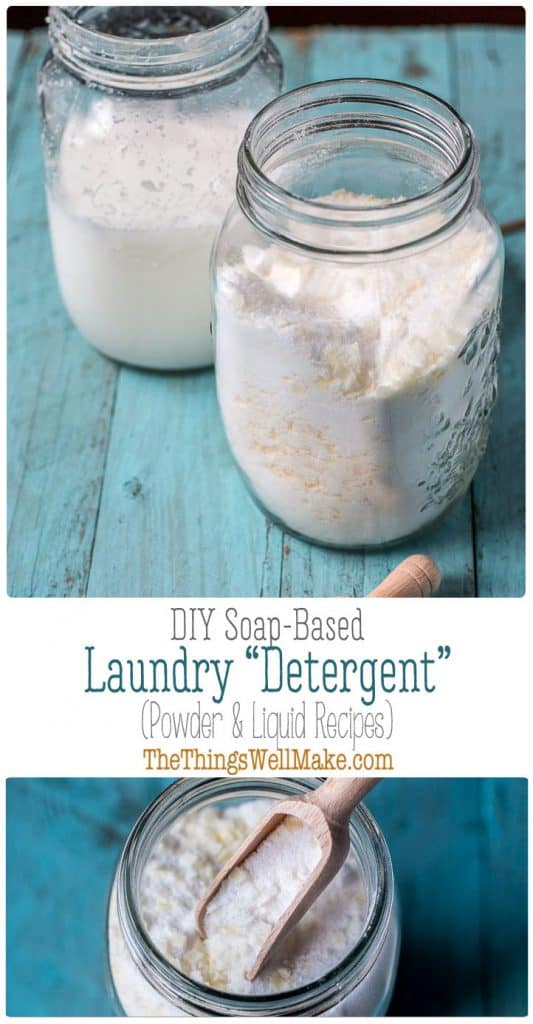
 Classic Grain Free Birthday Cake Recipe – Without Grain Cookbook
Classic Grain Free Birthday Cake Recipe – Without Grain Cookbook
Susan
Hi Tracy … thank you for all your amazing information. As far as the laundry detergent goes, I do prefer powdered even if I was to buy in the store, much more eco-friendly especially in the packaging. I also don’t use borax, the EWG – Environmental Working Group rates borax as a grade D, with concerns being the highest for developmental and reproductive issues.
My question is actually regarding the use of grated soap, my research says that grated bar soap, no matter what kind can cause residue and buildup on the clothing. Is there any way to use your liquid castile soap in the powdered detergent recipe? Thank you again.
Susan
Tracy Ariza, DDS
Hi Susan,
I personally now use a non-soap detergent that I make with surfactants these days for that very reason! I would think it would be easy enough to make a powdered version with powdered SLS combined with another powdered surfactant like SCI. I think the buildup occurs mostly with harder water, and, while I never had issues when using soaps, I decided to make the switch just in case. I’d assume that a liquid soap would have the same issues as a grated bar soap.